35mm is the future of camera phones – and the Nubia Z70 Ultra and Vivo X200 Ultra are the proof
Another phone maker has ditched the 23mm smartphone camera status quo, so are Nubia's Z70 Ultra and Vivo's X200 Ultra the 35mm future photographers have been waiting for?
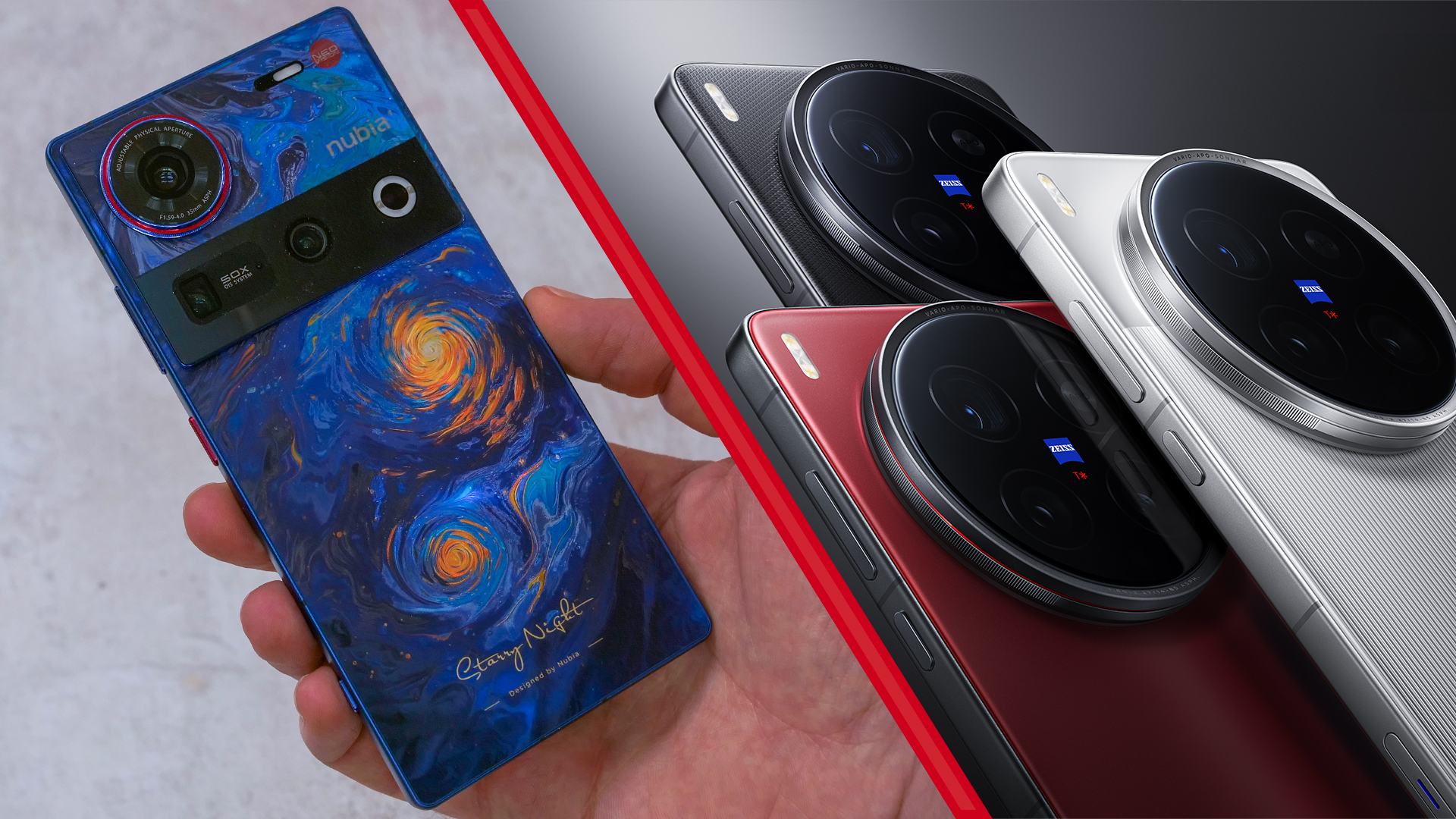
We’re inching toward a 35mm smartphone future, finally. After last year's Nubia Z60 Ultra made the switch, the recently announced Nubia Z70 Ultra and Vivo X200 Ultra are breaking away from the 23mm status quo that’s overstayed its welcome.
For the longest time, smartphones have saved their best hardware for the primary 23mm equivalent focal length cameras – and this made perfect sense back in 2015, when phones had one camera.
After all, 23mm is very versatile. Wide but not too wide; great for group shots while limiting distortion; anyone who wants to zoom can pinch in; and there's no real need for an ultra-wide, as recent phones like the Razr 50 Ultra prove, ditching it to save space.
Born during the days when phones had only a single camera, the 23mm primary camera was a staple – and remained so even after manufacturers added a second, third, and fourth camera to the back of phones.
However, building a suite of lenses around a 23mm main camera has its drawbacks when you step back and consider the bigger picture.
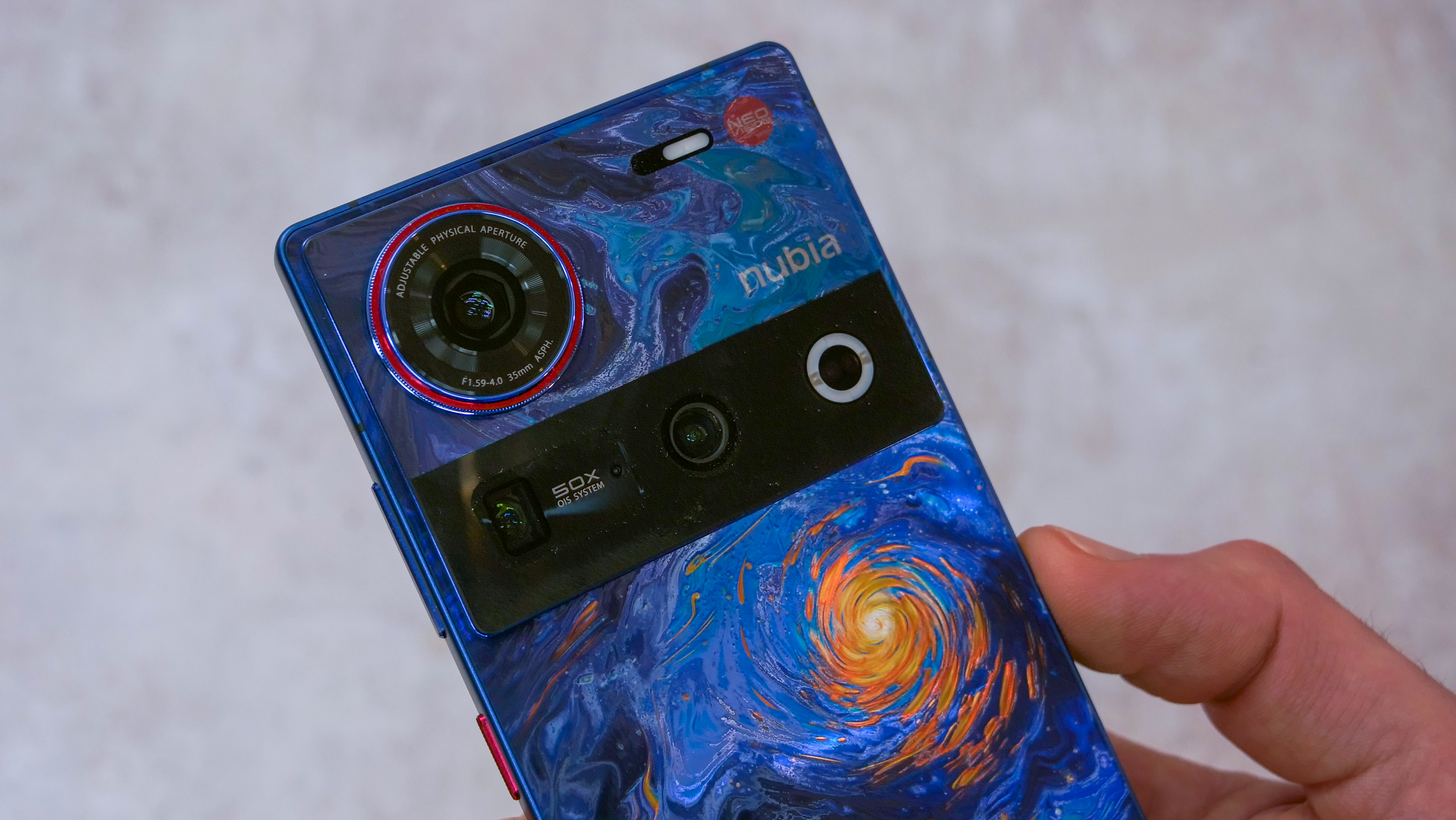
The bigger picture
Triple, quad and even penta cameras have become the standard for camera phones in recent years.
Take the best flagships of 2025: the Galaxy S25 Ultra, Oppo Find X8 Ultra, and Xiaomi 15 Ultra have four cameras around the back, while the Google Pixel 9 Pro, iPhone 16 Pro and Vivo X200 Pro have three.
Get the Digital Camera World Newsletter
The best camera deals, reviews, product advice, and unmissable photography news, direct to your inbox!
However, when you look at the focal length spread, each phone’s focal lengths are heavily skewed towards the wide end of the spectrum. See for yourself:
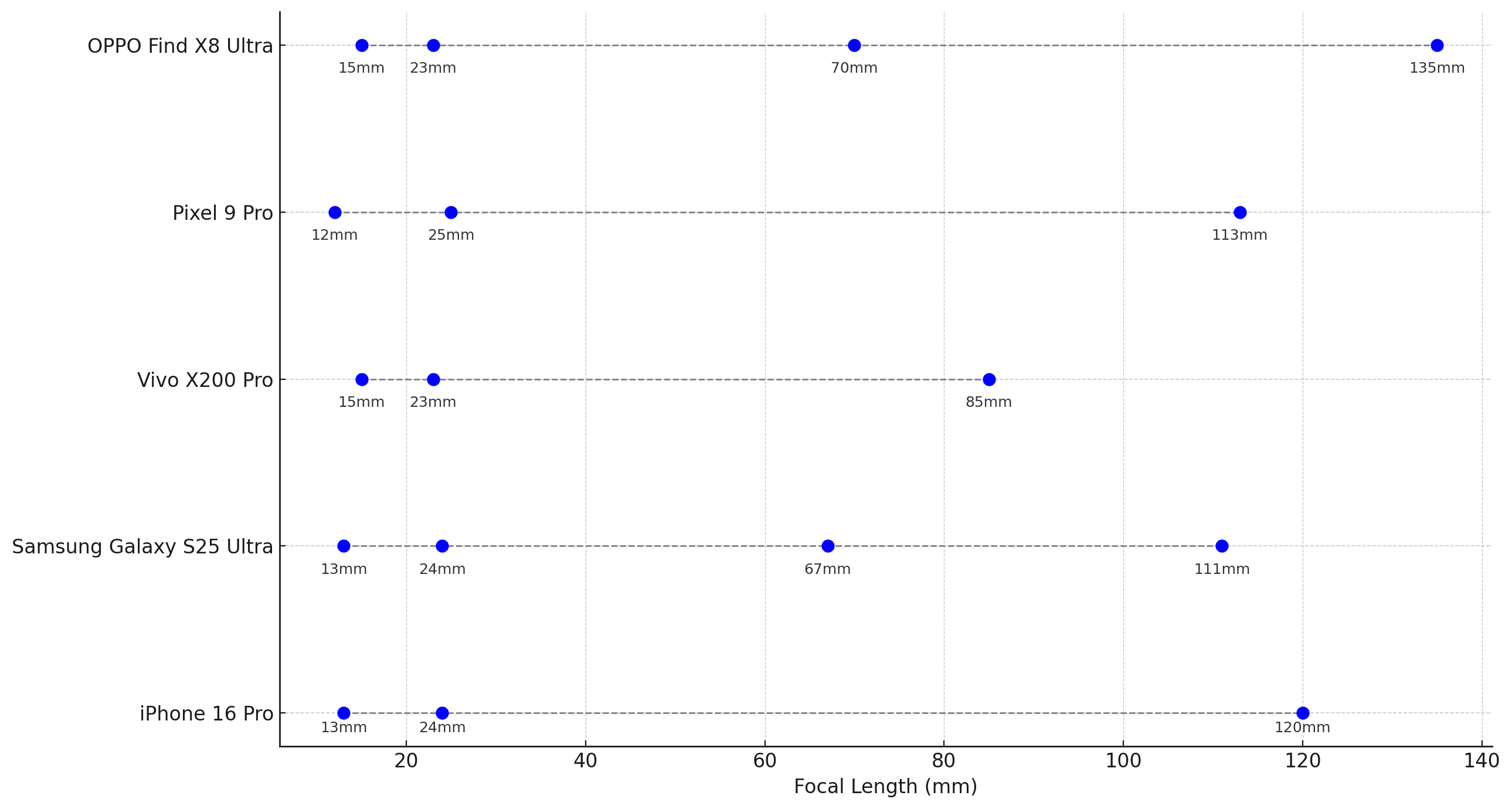
As you can see above, the 23mm primary cameras of all these current-gen flagships have to pull double duty to bridge the gap before the telephoto cameras kick in.
Quad camera phones like the Galaxy S25 Ultra and Oppo Find X8 Ultra help things along, but there’s still an unnecessary front-loading at the wide end of the spectrum.
In other words, phones are stacking wide-angle lenses on wide-angle lenses, and leaving a gap in the most natural focal length range for human vision: between 35 and 50mm.
By contrast, phones like the Nubia Z70 Ultra and Vivo X200 Ultra share the burden more evenly, as illustrated below:

What’s most impressive about both these phones is the fact that each camera is at least 50MP resolution – unlike Samsung, which has a 10MP 67mm camera – so Nubia and Vivo support in-sensor cropping for higher-quality zooming between cameras.
This is all theoretically assuming a more even spread is beneficial. But I conducted a quick, small-sample survey of a group of roughly 70 people’s favorite focal lengths (all subscribers to a tech YouTube channel), and respondents overwhelmingly opted for 35mm or greater, with 35mm winning out.
All this brings us back to these two forward-thinking smartphones, the Nubia Z70 Ultra and the Vivo X200 Ultra, each exceptional in its own way.
I’ve been using the Z70 Ultra for a few weeks now, so will kick off with a deep dive into why I think it’s exceptional and why it paves the way for the X200 Ultra to be near-perfect by today’s camera phone standards.
Nubia Z70 Ultra
The Nubia Z70 Ultra has three cameras: a very wide ultra-wide, with a 13mm equivalent focal length; a 35mm primary camera, which has a variable aperture that takes it from f/1.6 through to f/4; and a 70mm periscope camera.
There’s a lot to unpack here, but rather than start with the focal length, I’m going to focus on the variable aperture.
We’ve seen variable apertures on phones before. The Honor Magic 7 Pro’s is a modest f/1.4-2.0, while the Xiaomi 14 Ultra’s is a more comprehensive f/1.6-4.0 – which, paired with a 1-inch sensor, delivered meaningful results.
Nubia matches last year’s Xiaomi 14 Ultra with its own 35mm f/1.6-4.0 aperture lens.
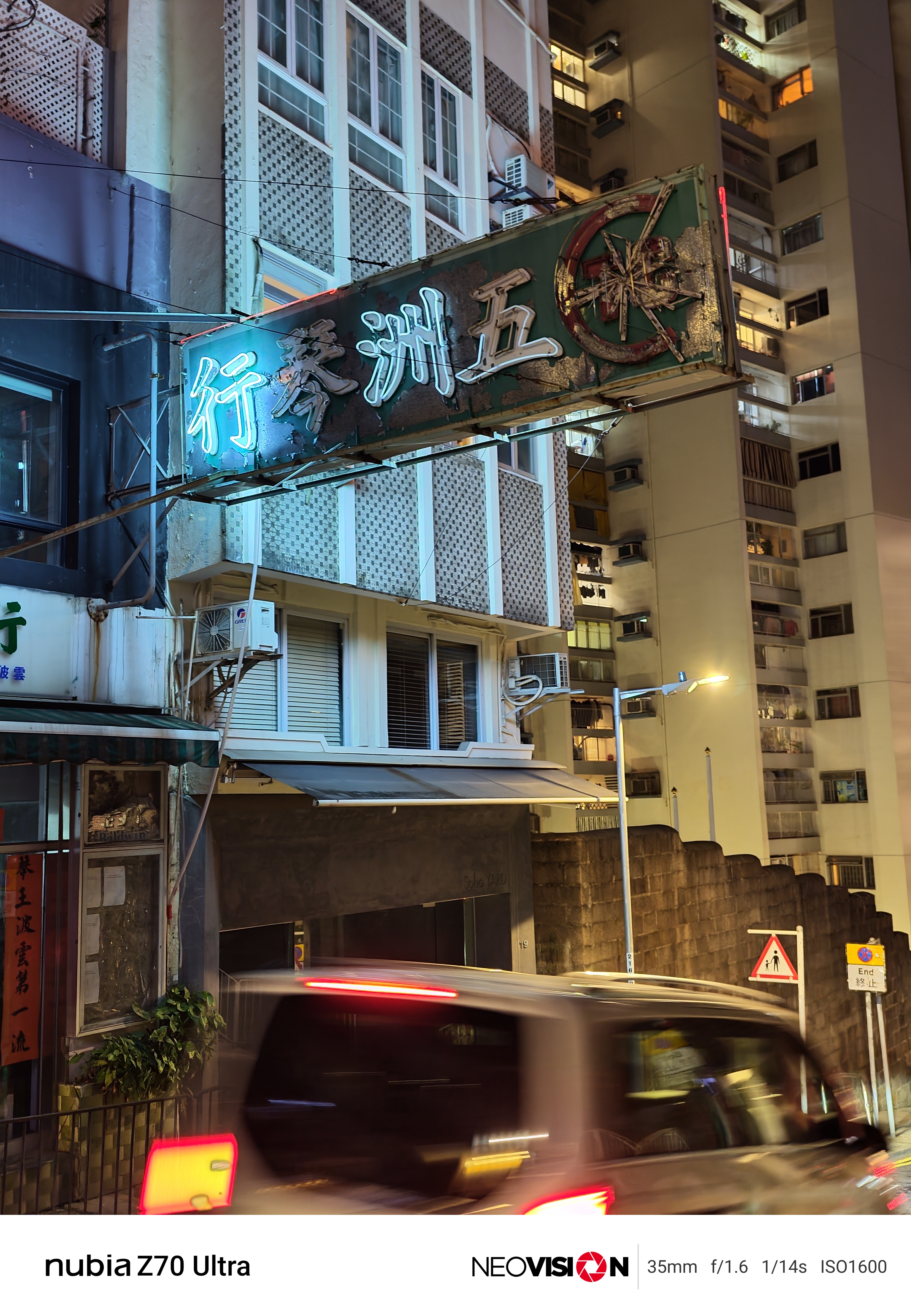
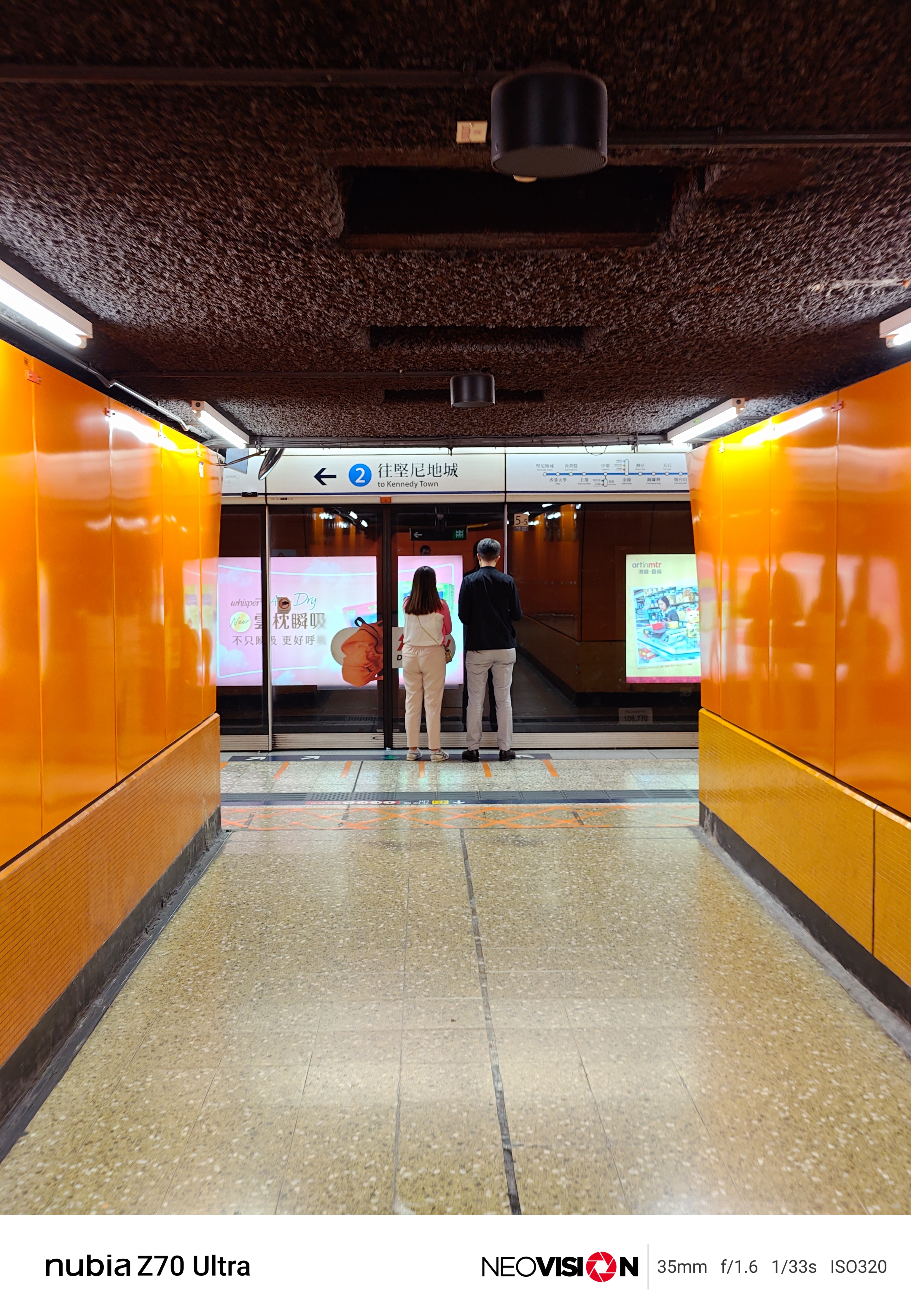
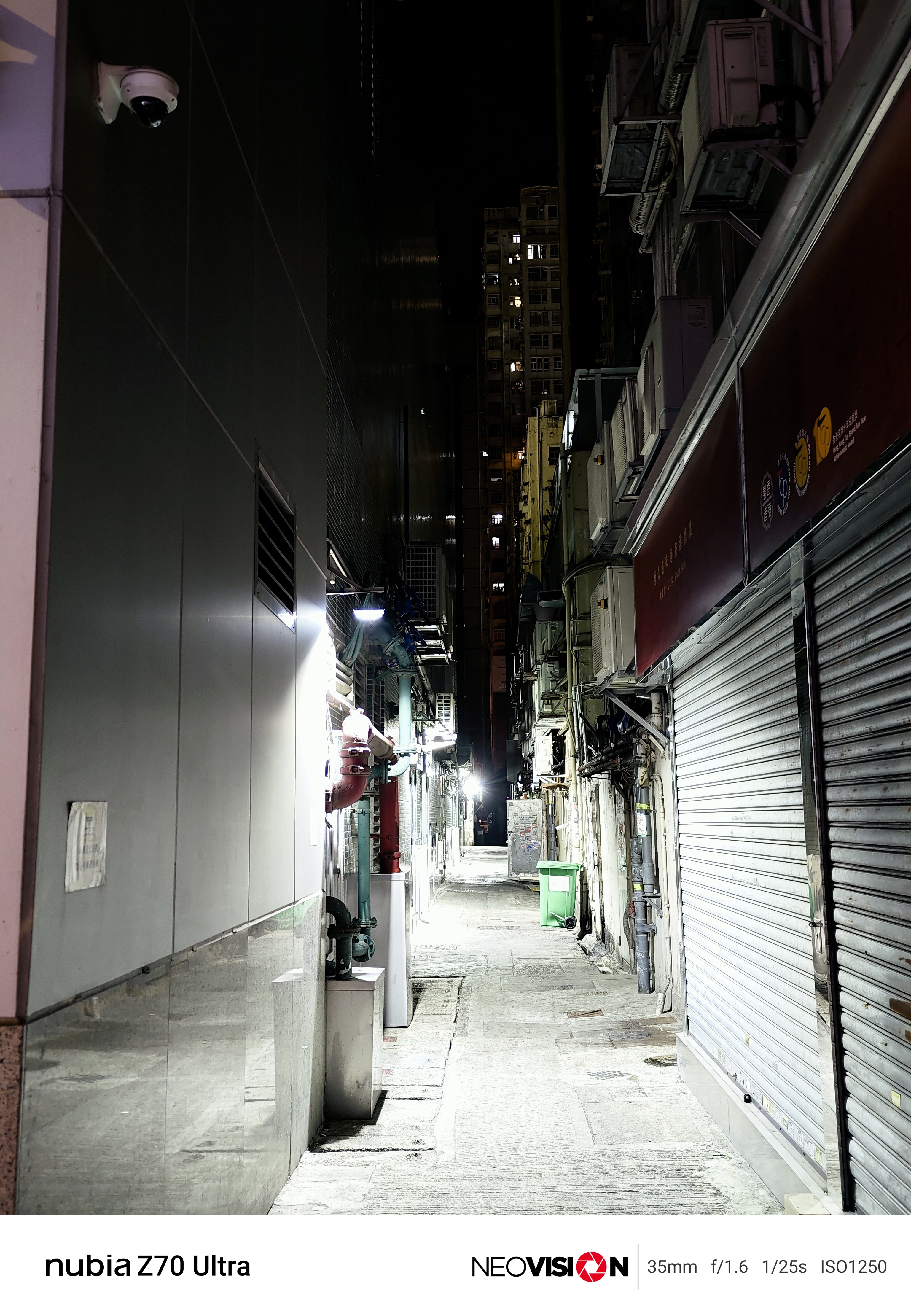
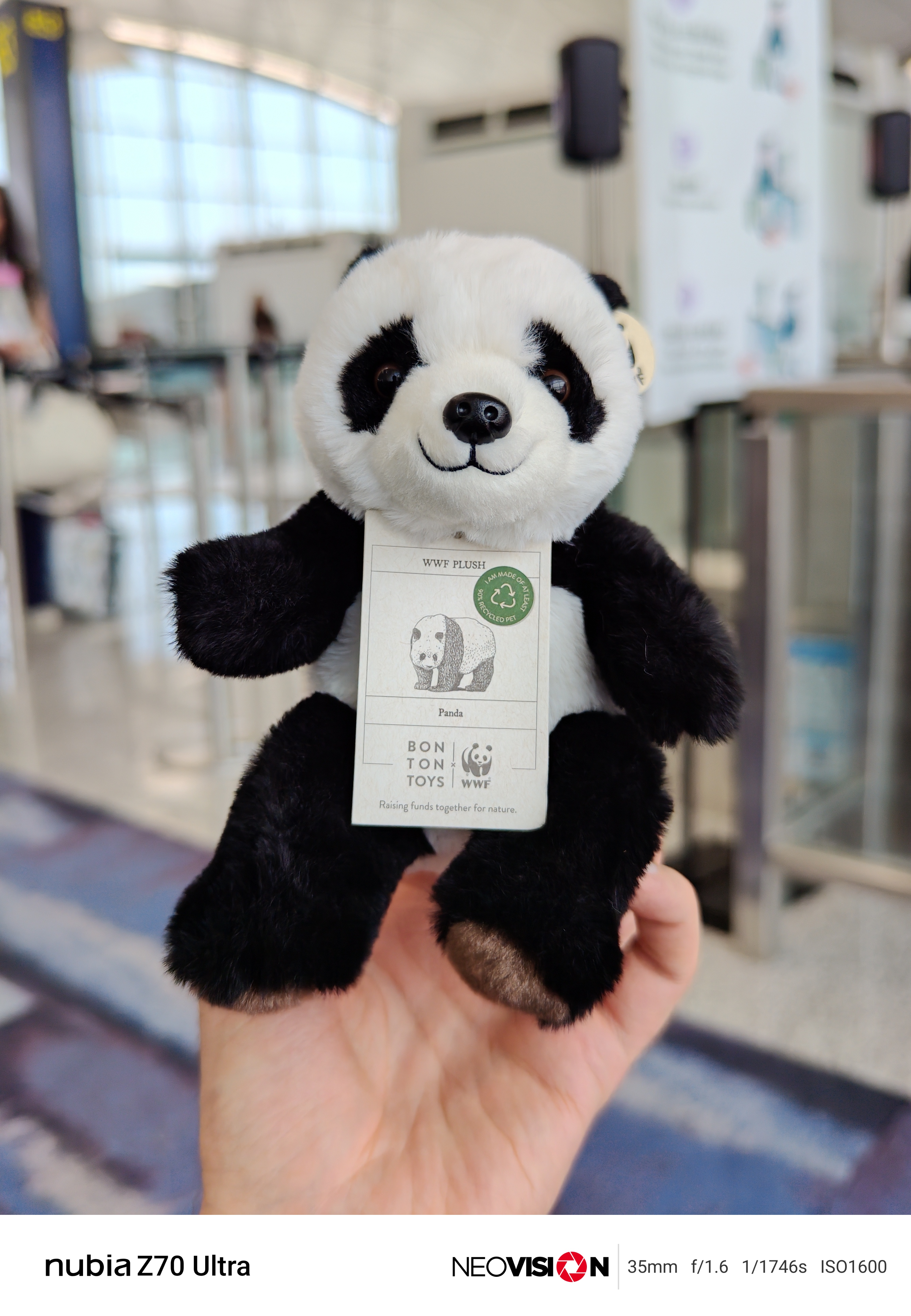
While Nubia doesn’t have a 1-inch sensor on its phone like Xiaomi, its primary 50MP 1/1.56-inch sensor and tighter 35mm equivalent focal length capture with a very shallow depth of field at f/1.6, and switching to f/4.0 makes a meaningful difference to both focus and light intake.
The result is a primary camera that’s technically one of the most impressive I’ve ever used, and I’ve been testing camera phones for over 15 years.
The Z70 Ultra’s ultra-wide is a 50MP, 1/2.88-inch sensor with a roughly 13mm equivalent focal length, making it one of the widest ultra-wides around.
With its high resolution, it can comfortably crop in at 24mm and capture good-looking shots, though a smaller sensor can struggle to bridge the gap between 13mm and 35mm in the dark, even if the resolution is up to the task of capturing a lossless 12MP shot.
More impressive is the 70mm telephoto camera. With its 1/2-inch sensor, 64MP resolution and fast f/2.5 aperture lens with a roughly 10cm nearest focus, it’s extremely versatile, great for product shots, portraits and, thanks to respectable AI zoom performance, it’s also a powerful tele camera at 100mm and beyond.
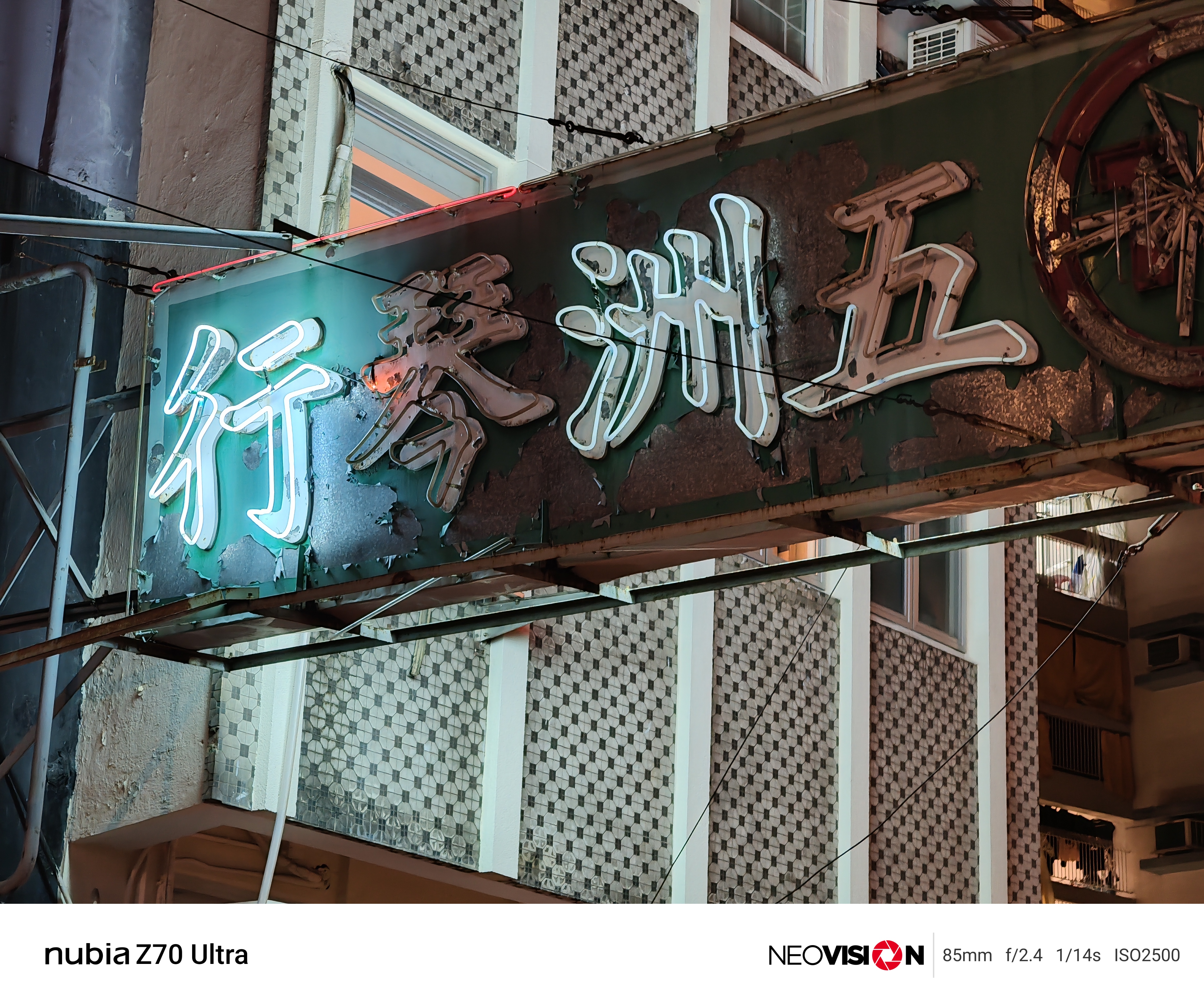
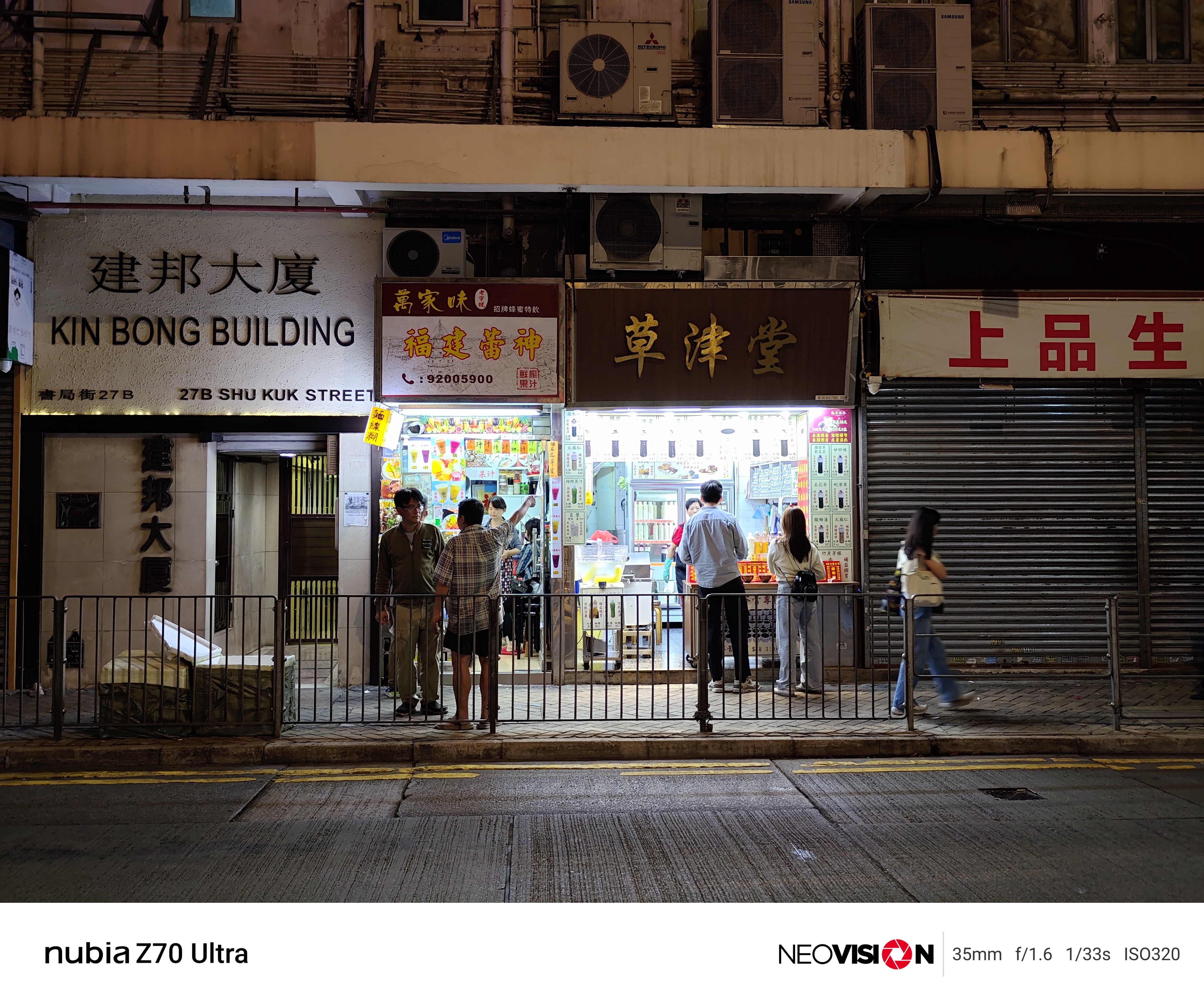
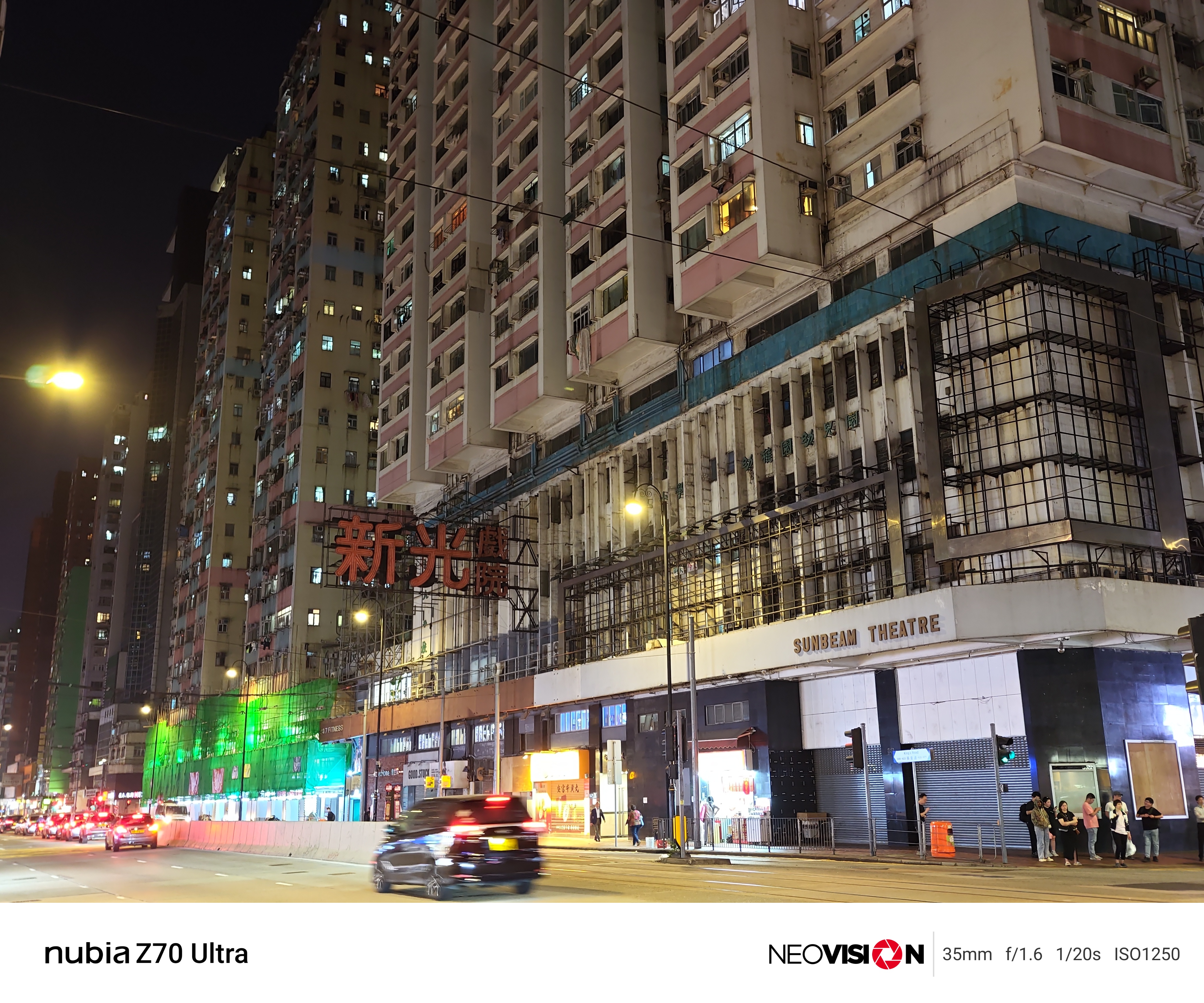
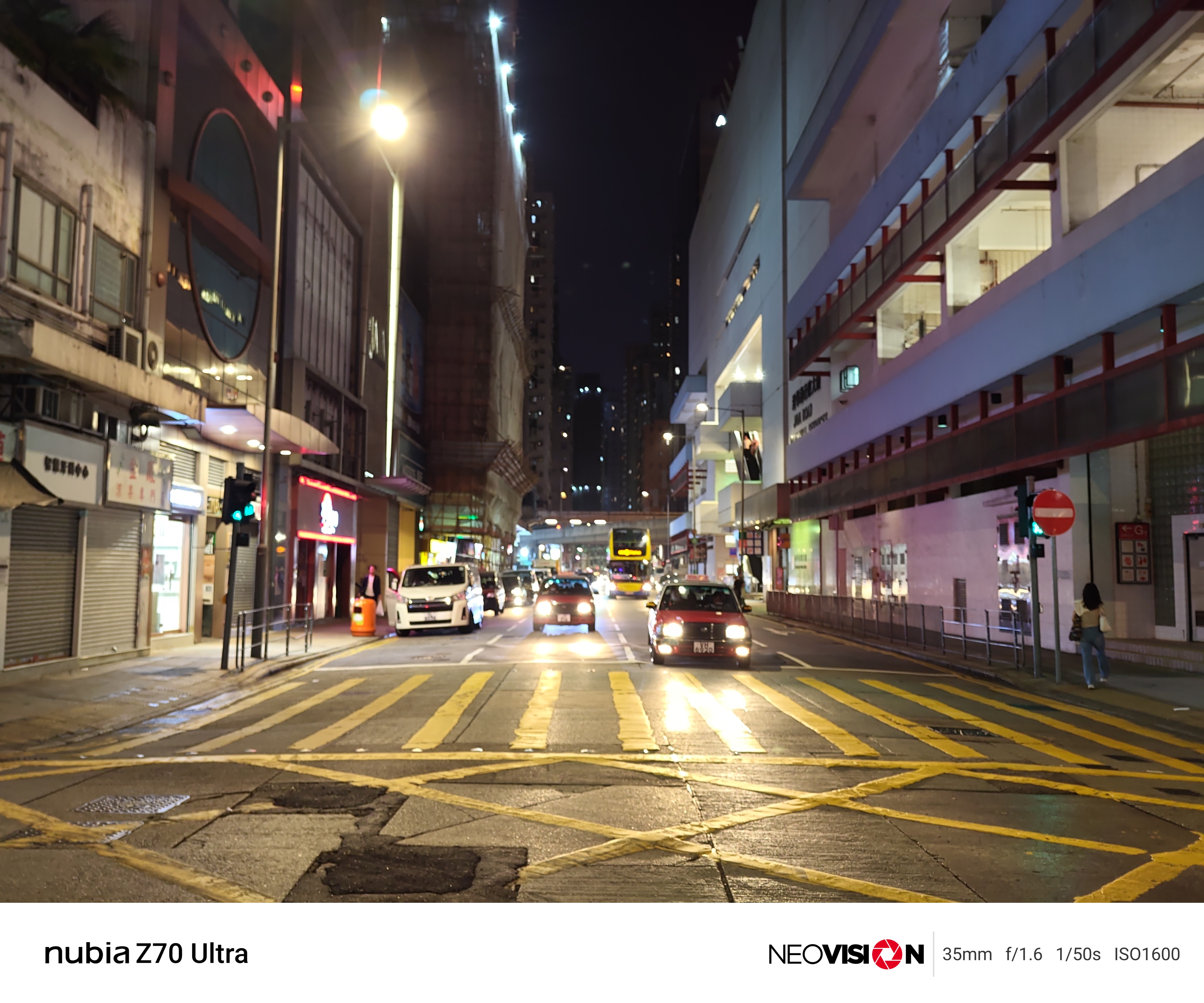
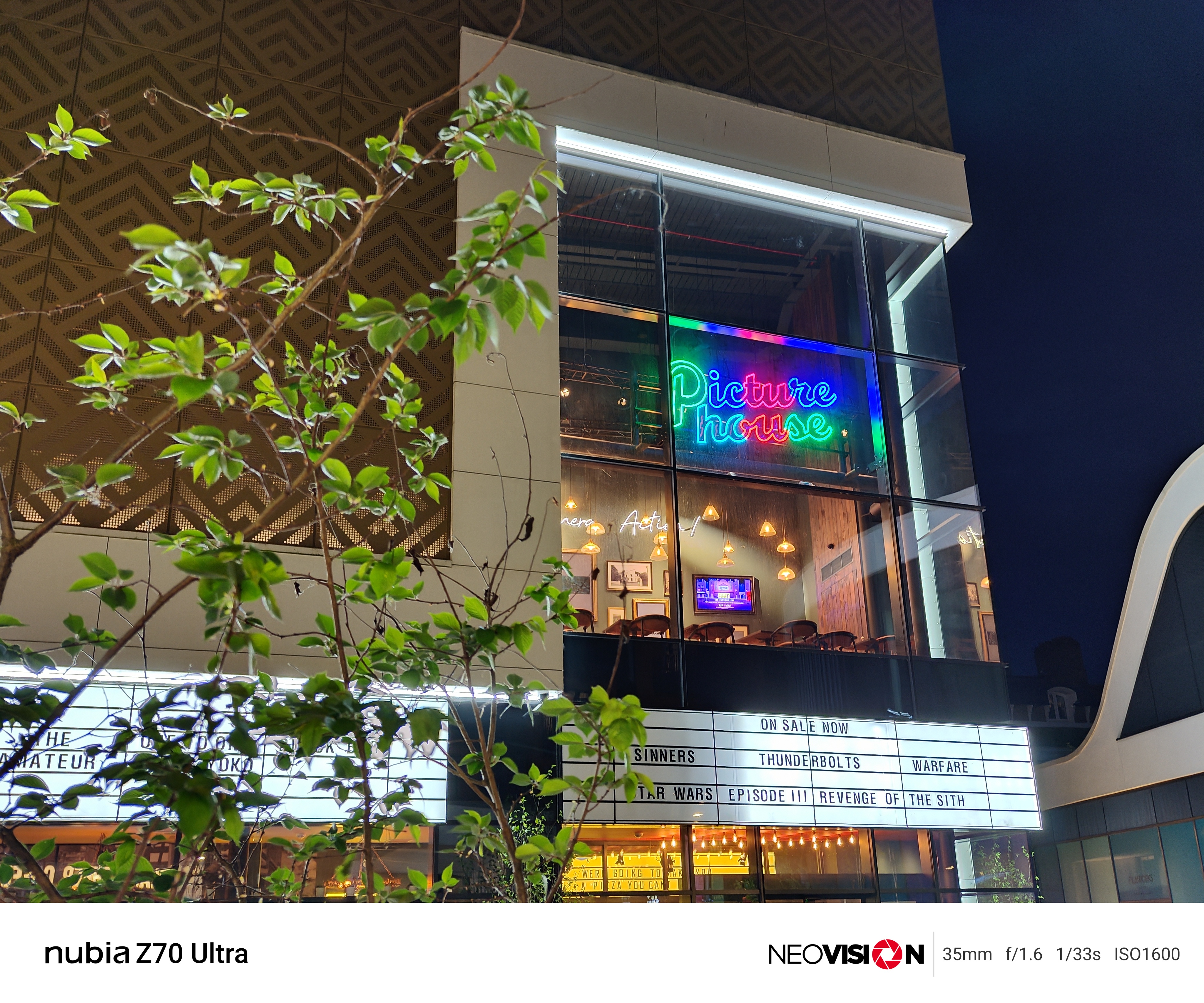
Given everything else the Nubia Z70 Ultra has going for it – the latest Snapdragon 8 Elite chipset makes it a gaming powerhouse, there’s a huge 6150mAh battery that lasts over a day, and the all-screen display free from a notch or punch hole looks glorious – it’s easy to overlook drawbacks of this standout 35mm smartphone.
After a few weeks using it, though, there are a few that shouldn’t be overlooked.
First, the front camera – which is an in-display, invisible punch hole – may look futuristic but its picture quality is subpar. So if you’re looking for a vlogging or lowlight selfie option, look elsewhere.
Nubia’s photo processing is also less refined than that of Google, Oppo or Vivo. It isn’t bad, per se, but I frequently butted heads with blown-out highlights and overexposed scenes that alternatives wouldn’t have struggled with.
The phone also misses out on wireless charging and the software update promise can’t stack up to the seven years offered by Google, Samsung and Honor.
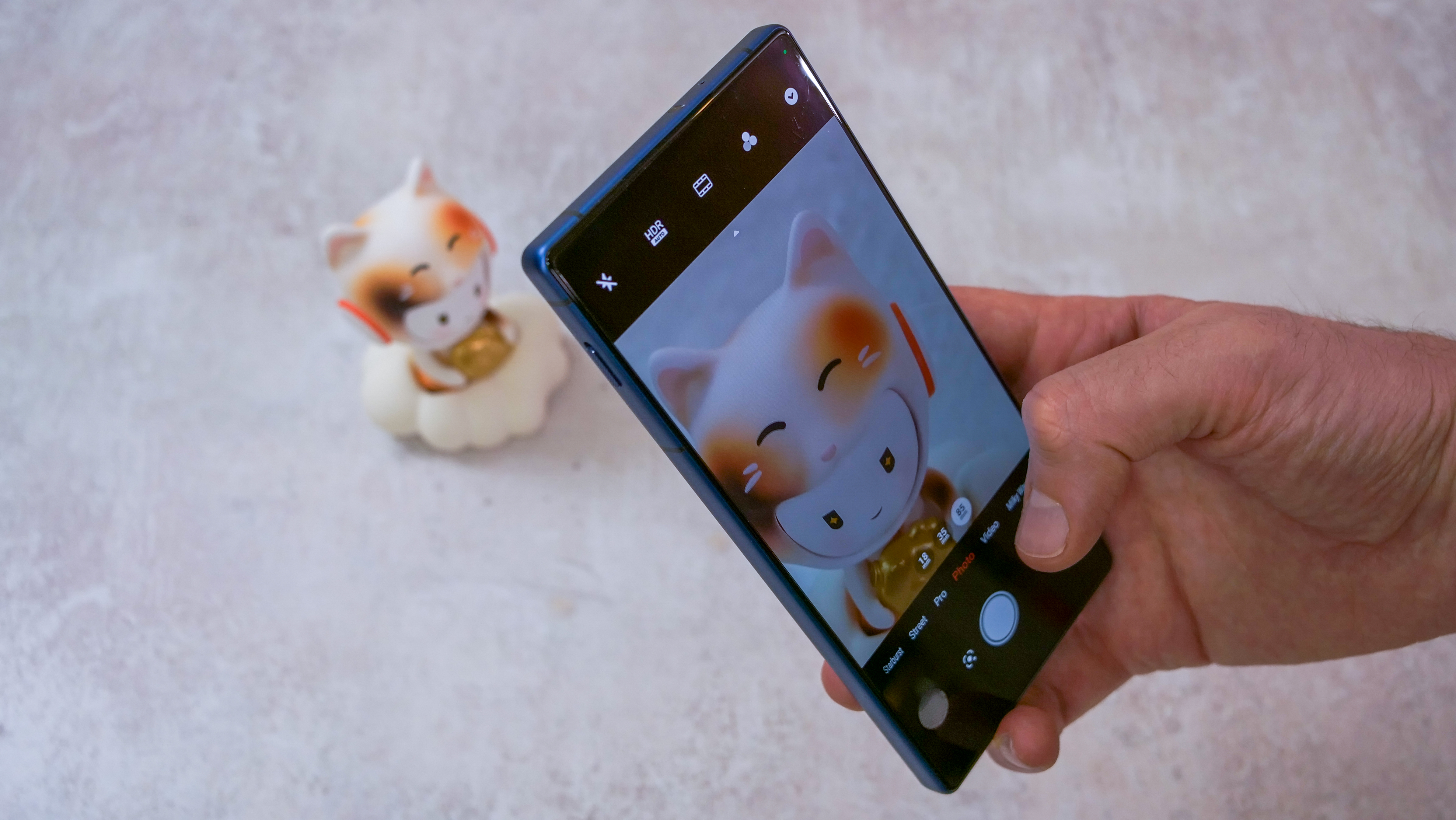
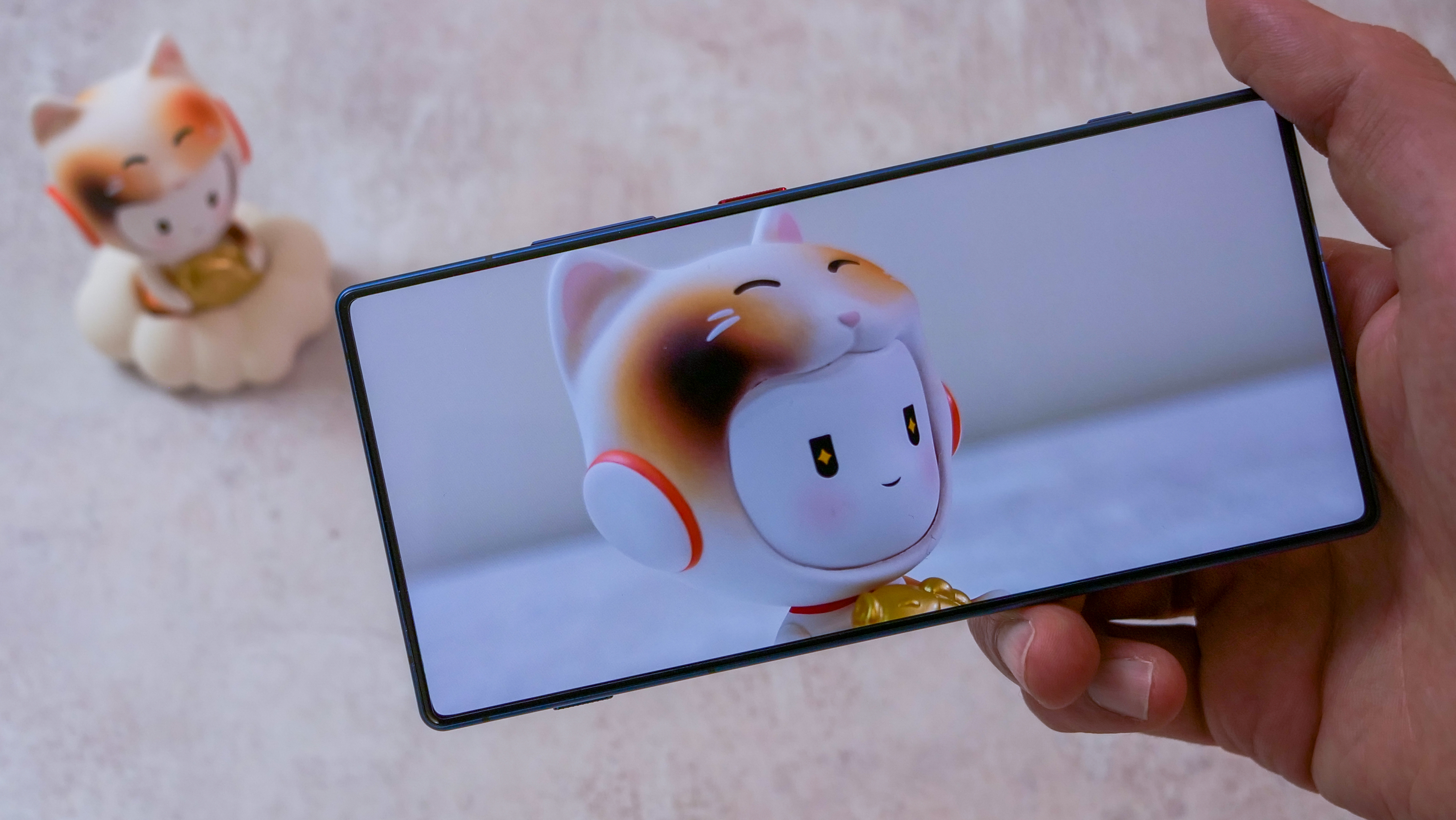
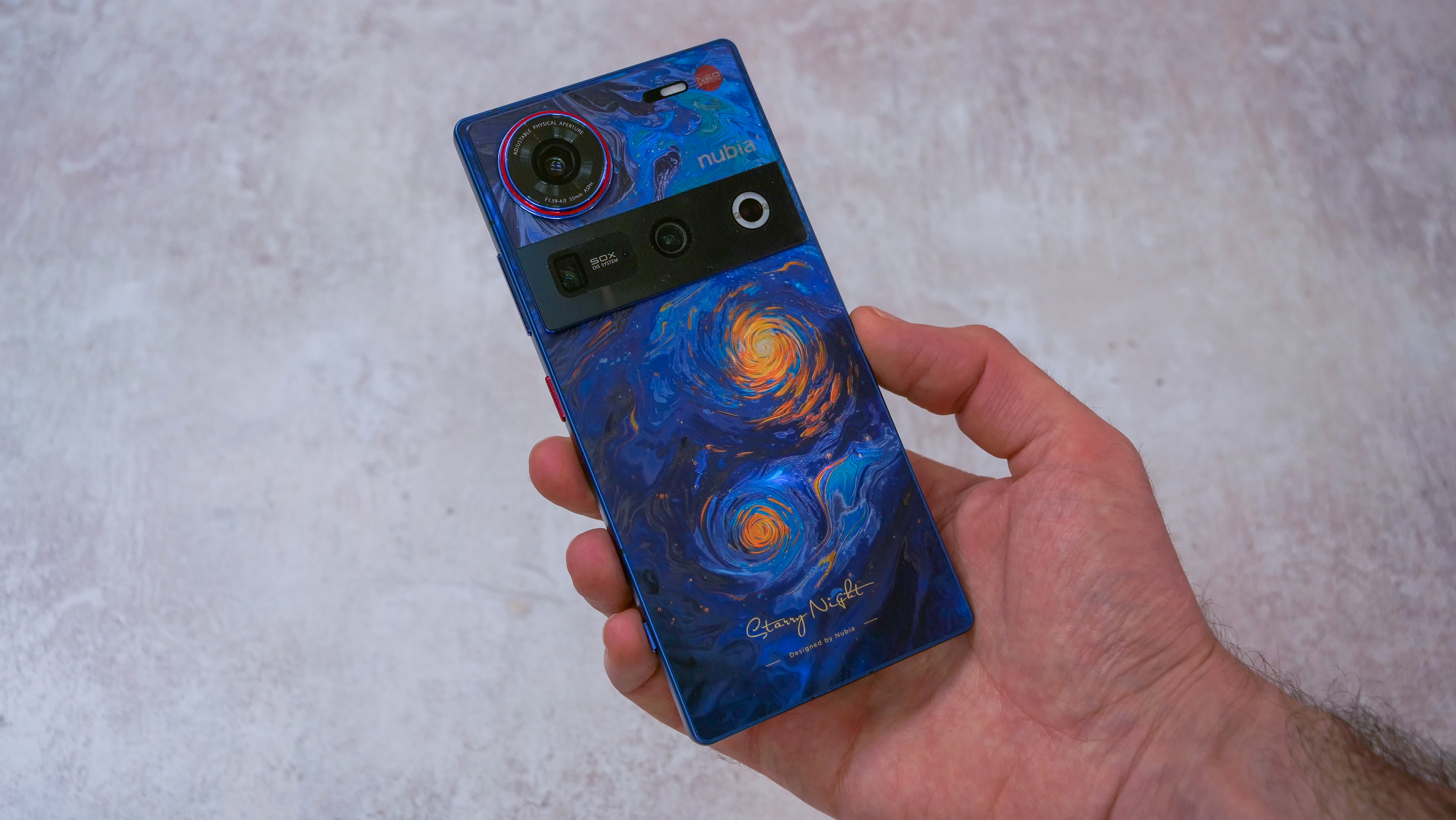
Despite its drawbacks, though, on a pure camera level the Nubia Z70 Ultra is a value champion that’s both avant-garde in its style and camera configuration, and edges ahead of established players like the iPhone 16 Pro Max and Galaxy S25 Ultra for me.
It costs significantly less, packs plenty to geek out over, and feels more like a point-and-shoot – helped by the physical shutter key, perfect for 35mm street photography.
Vivo X200 Ultra
The final word in this tribute to 35mm photography will leave you with the specs of the Vivo X200 Ultra, arguably the most exciting camera phone of the past few years.
The main reason the X200 Ultra looks so good is that it is a true camera system, ditching the notion of a primary camera and instead featuring large, primary-sized sensors, matched with novel focal lengths that photographers have clearly curated.
For starters, the 35mm and 14mm cameras both feature the same 50MP, 1/1.28-inch Sony IMX 818 sensor – the same size as the primary camera sensor of an iPhone 16 Pro Max and larger than the S25 Ultra’s main sensor.
That means there really isn’t a primary camera on the X200 Ultra, they're all primary cameras.
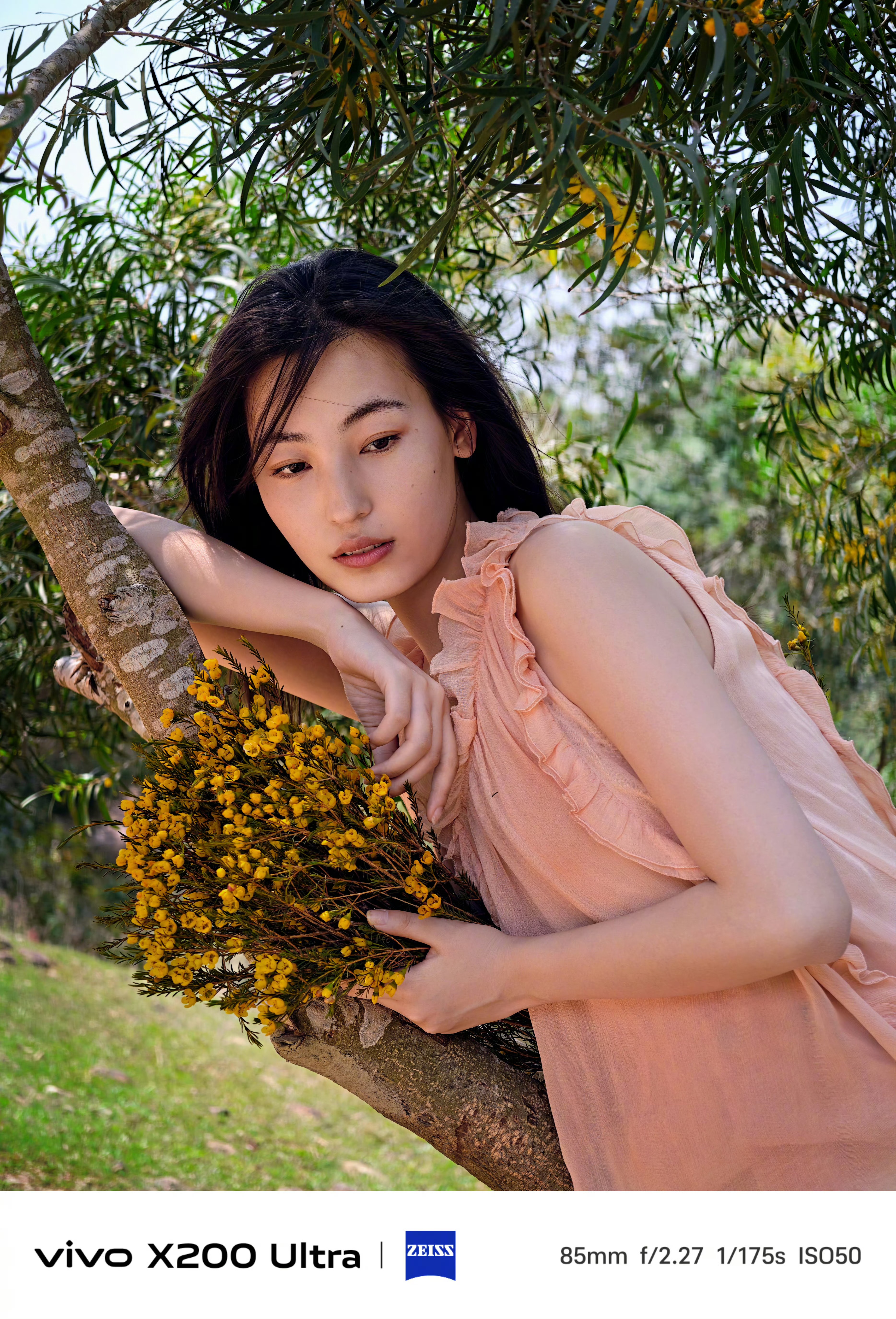
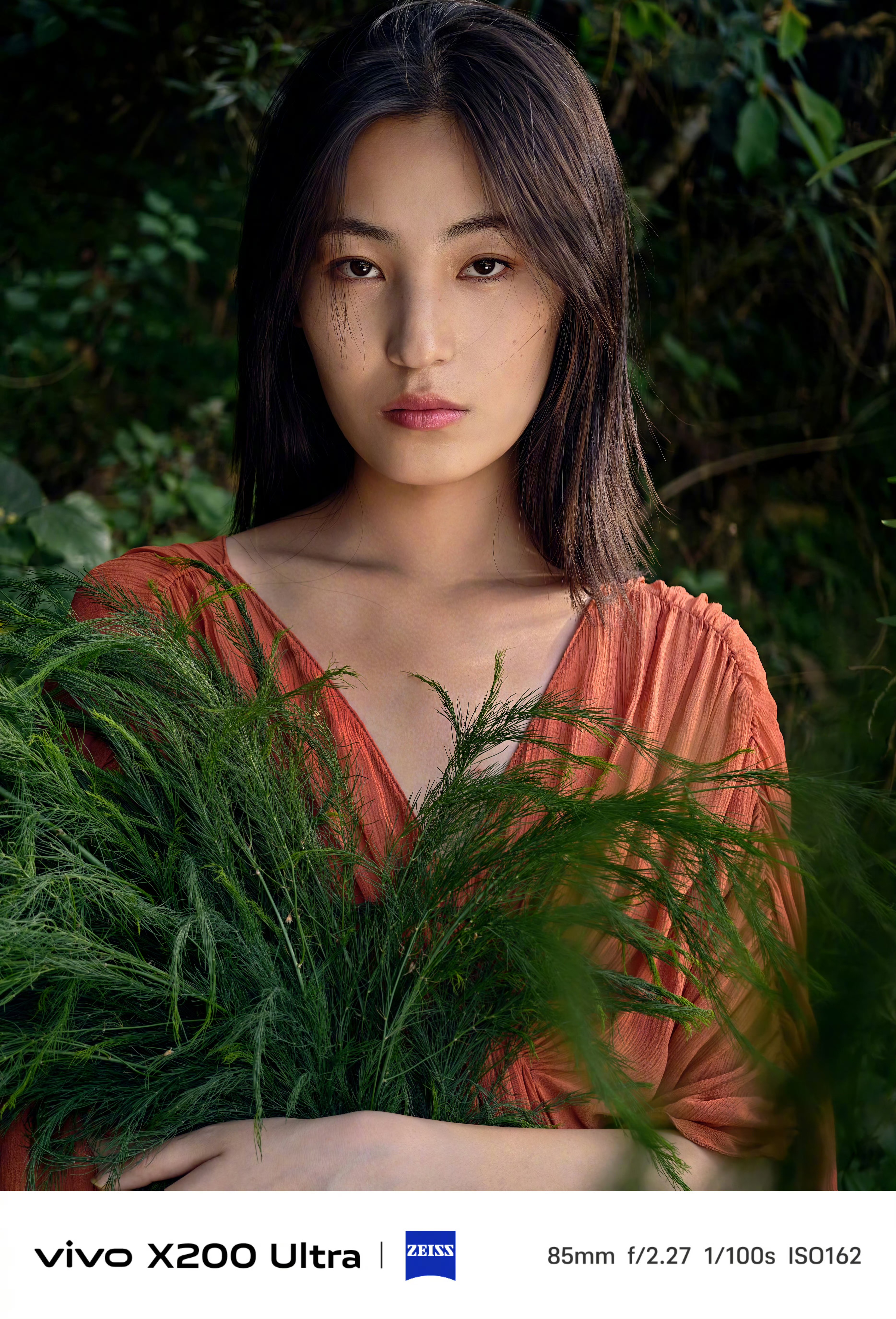
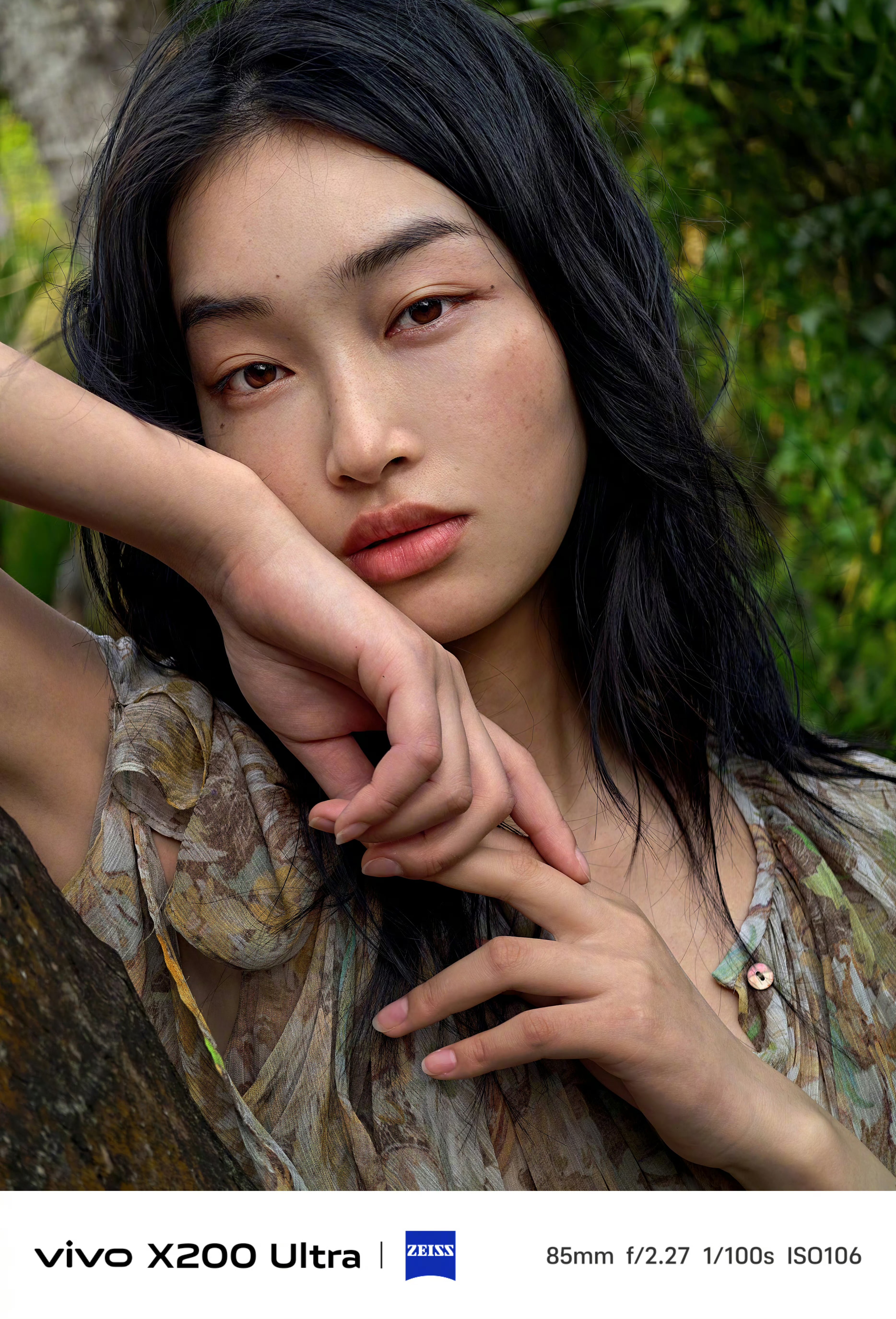
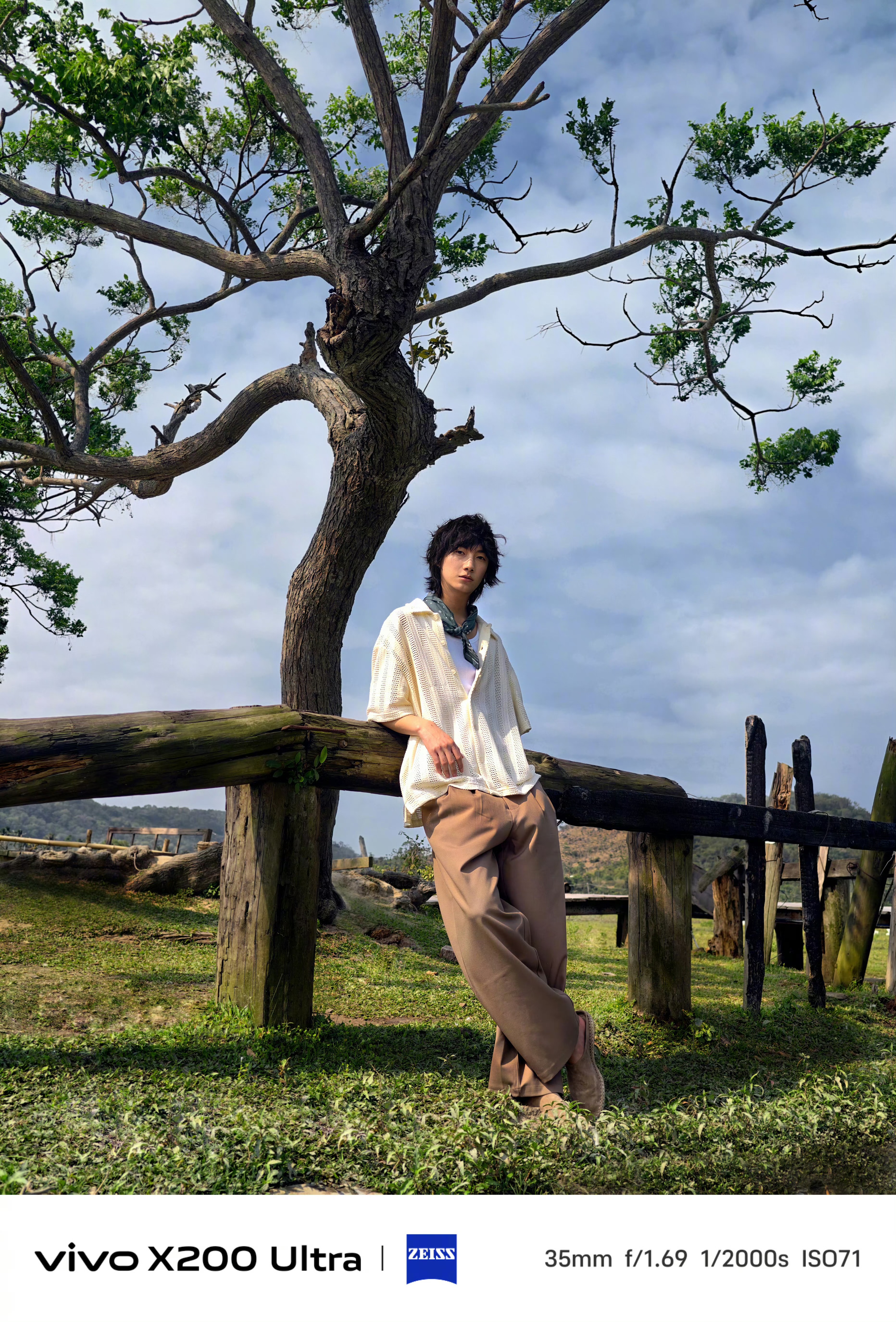

The ultra-wide has a 14mm equivalent focal length and a fast f/2.0 aperture, and in a turn for the books optical image stabilization (OIS) – which is almost never seen on an ultra-wide camera.
Punch into 35mm and there’s a fast f/1.7 aperture lens with gimbal OIS, so each of these is built to bridge the gap to the next optical focal length for maximum freedom.
Finally, the 85mm telephoto camera has a 1/1.4-inch 200MP sensor, which was seen on the Vivo X200 Pro. Considering this is the best telephoto implementation I’ve tested to date, the Vivo X200 Ultra’s periscope camera doesn’t need to be better than that of the Pro in order to make the Ultra’s zoom impressive.
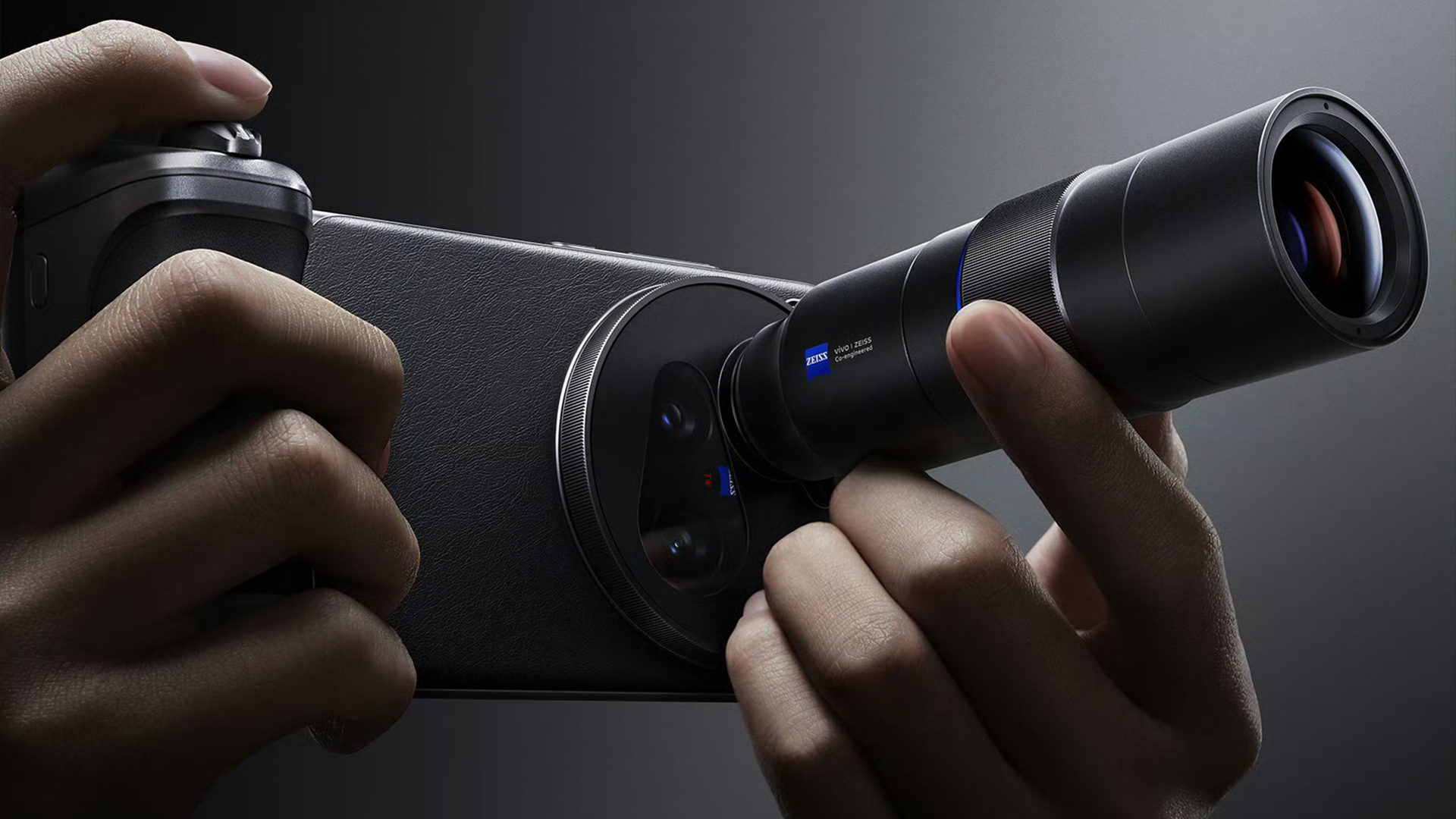
Throw into the mix an optical screw-on 200mm lens that Vivo’s launching alongside the X200 Ultra, and a camera grip, not to mention the Zeiss co-engineering across all Vivo’s high-end devices, and this is clearly a photographer’s phone in a way that iPhones, Galaxys and Pixels aren’t.
The bad news is that there is no confirmed release for the X200 Ultra outside China. Unlike the Nubia Z70 Ultra, Vivo’s top-tier devices don’t tend to get European or US launches. Hopefully that will change, given the global interest in its latest 35mm, all-primary camera flagship. For now, though, you'll need to import one to try it out.
Whether or not the X200 Ultra ever makes it to global shelves, its message is loud and clear: the era of focal length inertia is over. Phones are ready for camera systems built around 35mm cameras – and so are photographers.
Basil Kronfli is a freelance technology journalist, consultant, and content creator. He trained in graphic design and started his career at Canon Europe before moving into journalism. Basil is also experienced in video production, independently running the YouTube channel TechEdit, and during his time at Future, he worked alongside the Digital Camera World team as a senior video producer.
You must confirm your public display name before commenting
Please logout and then login again, you will then be prompted to enter your display name.

